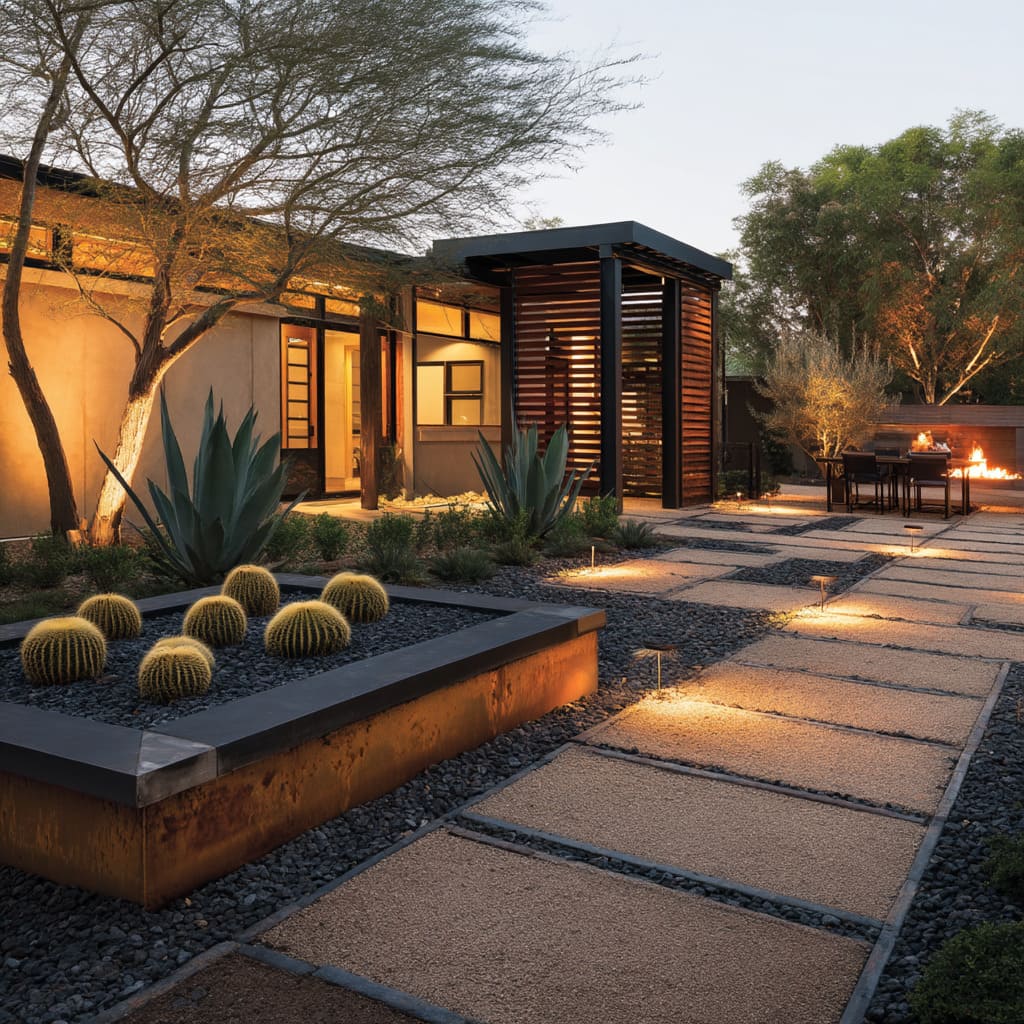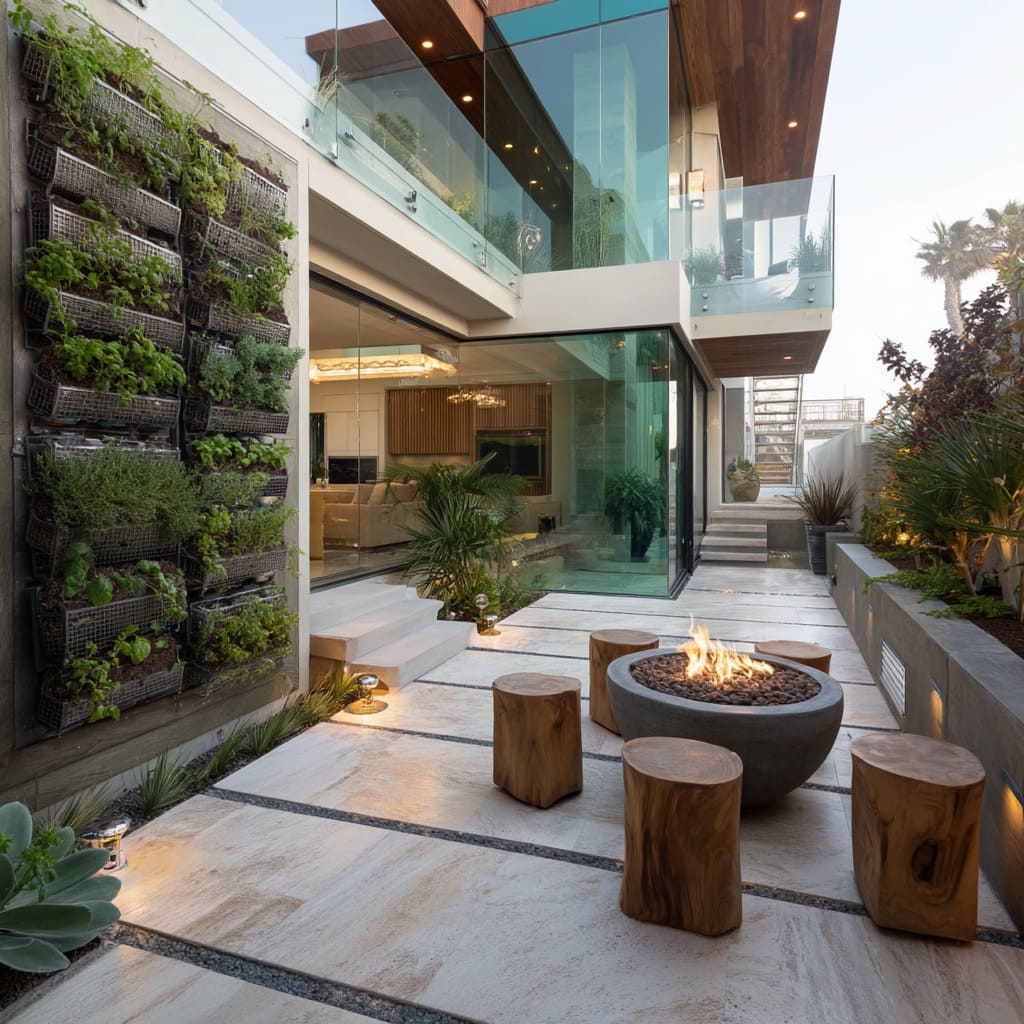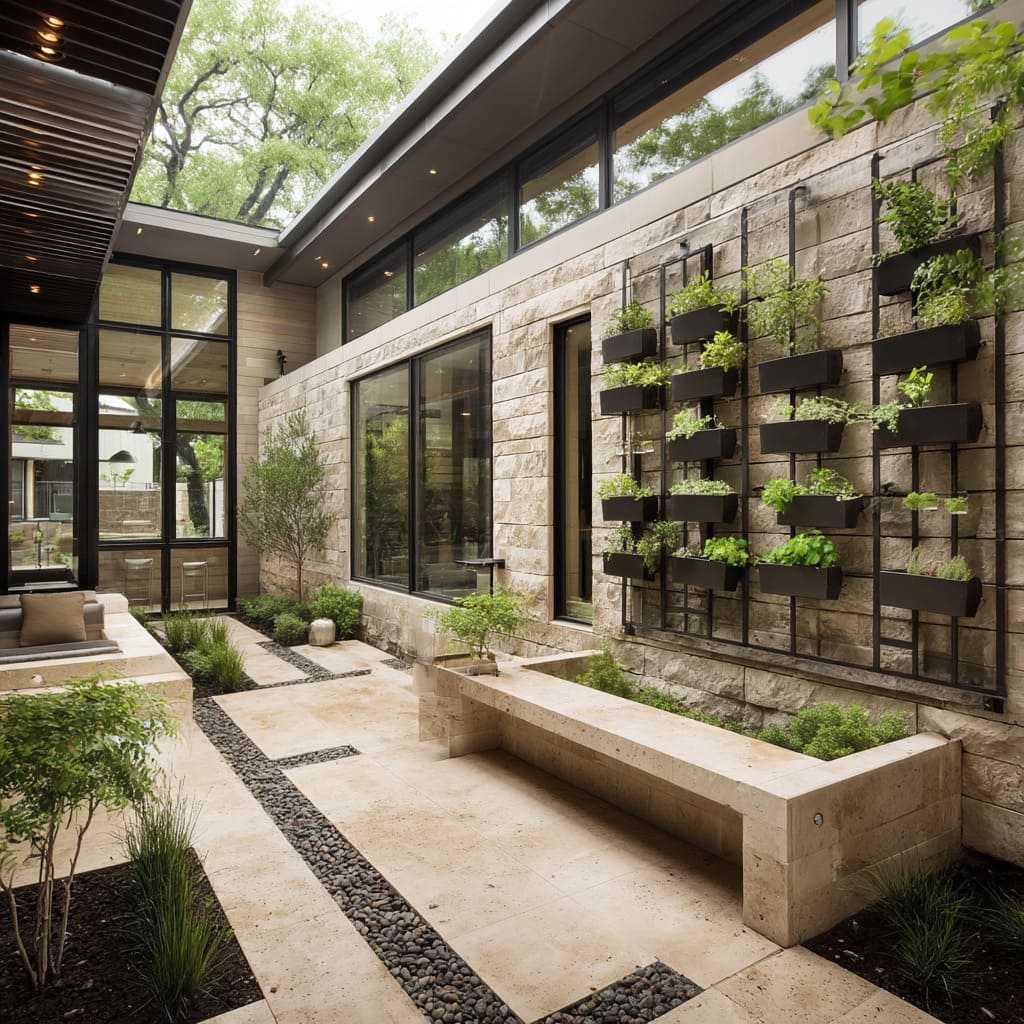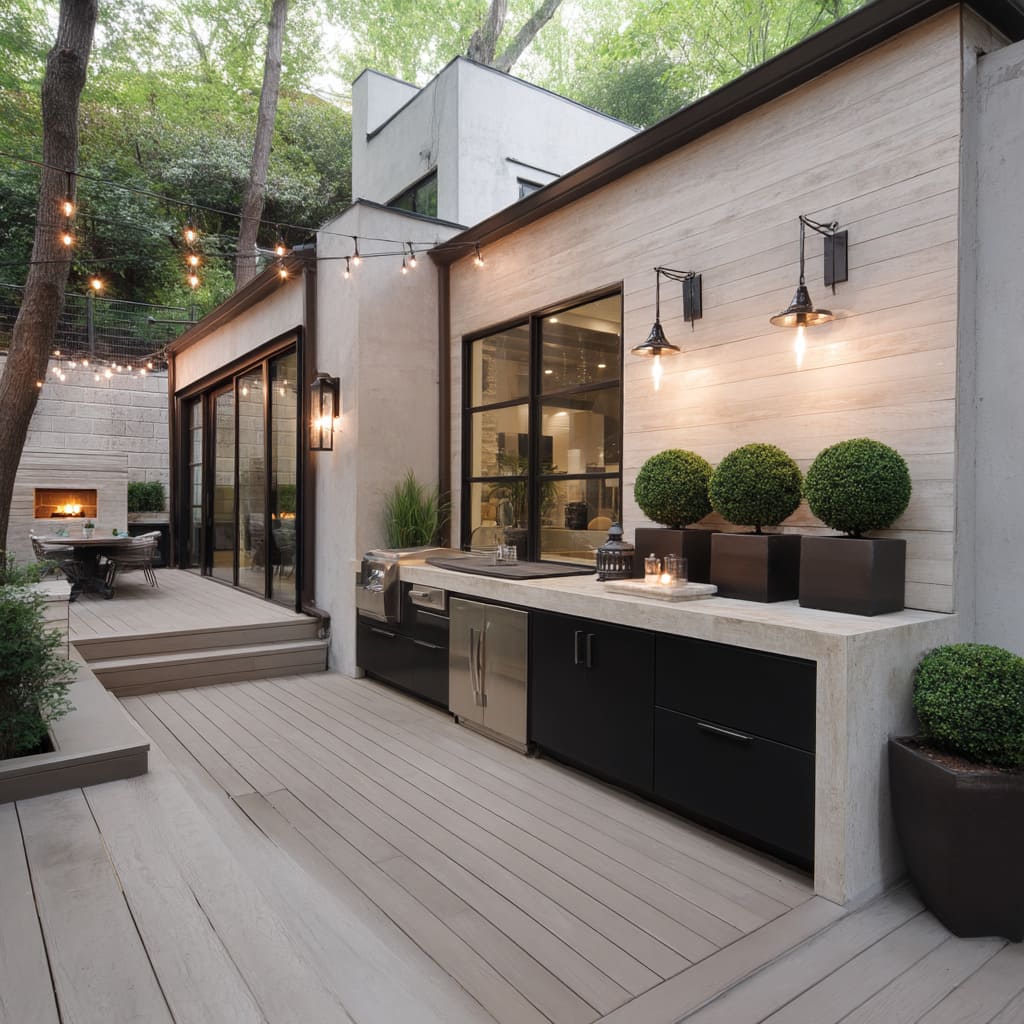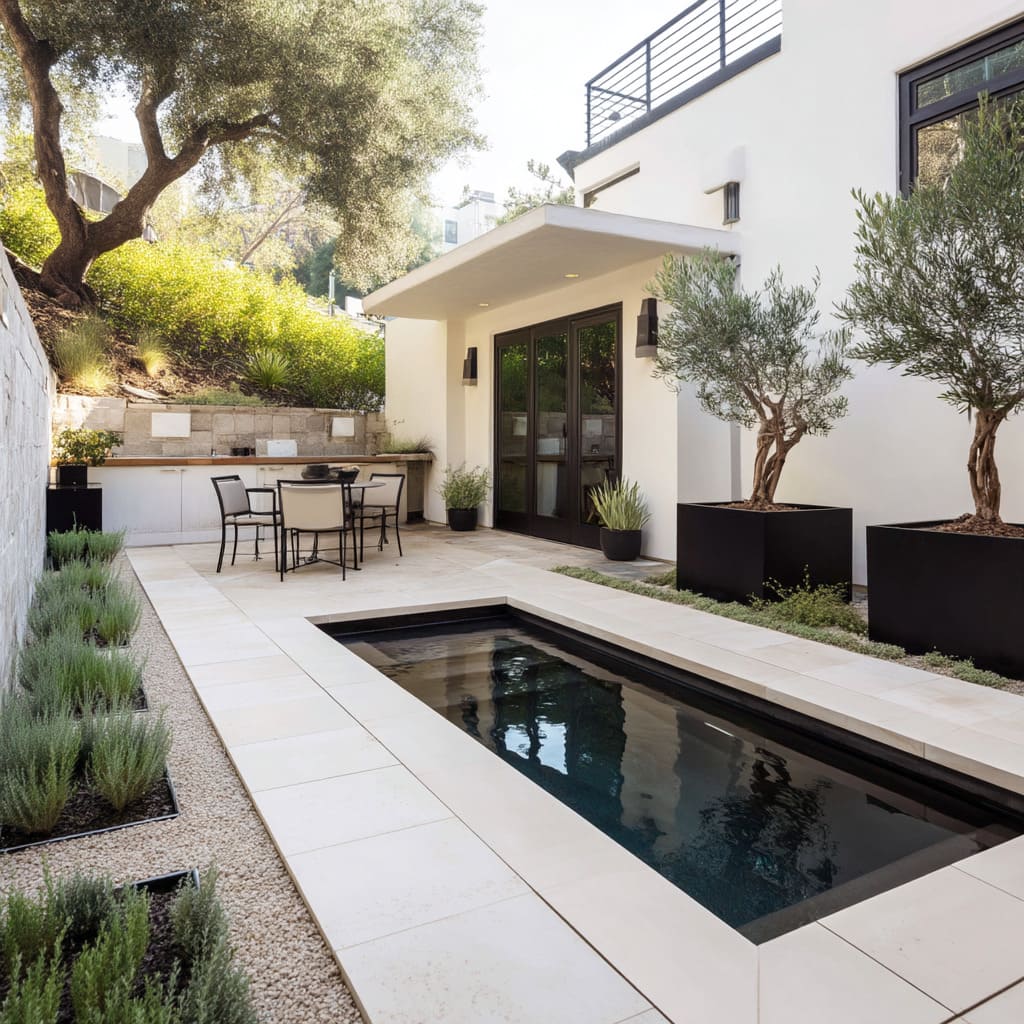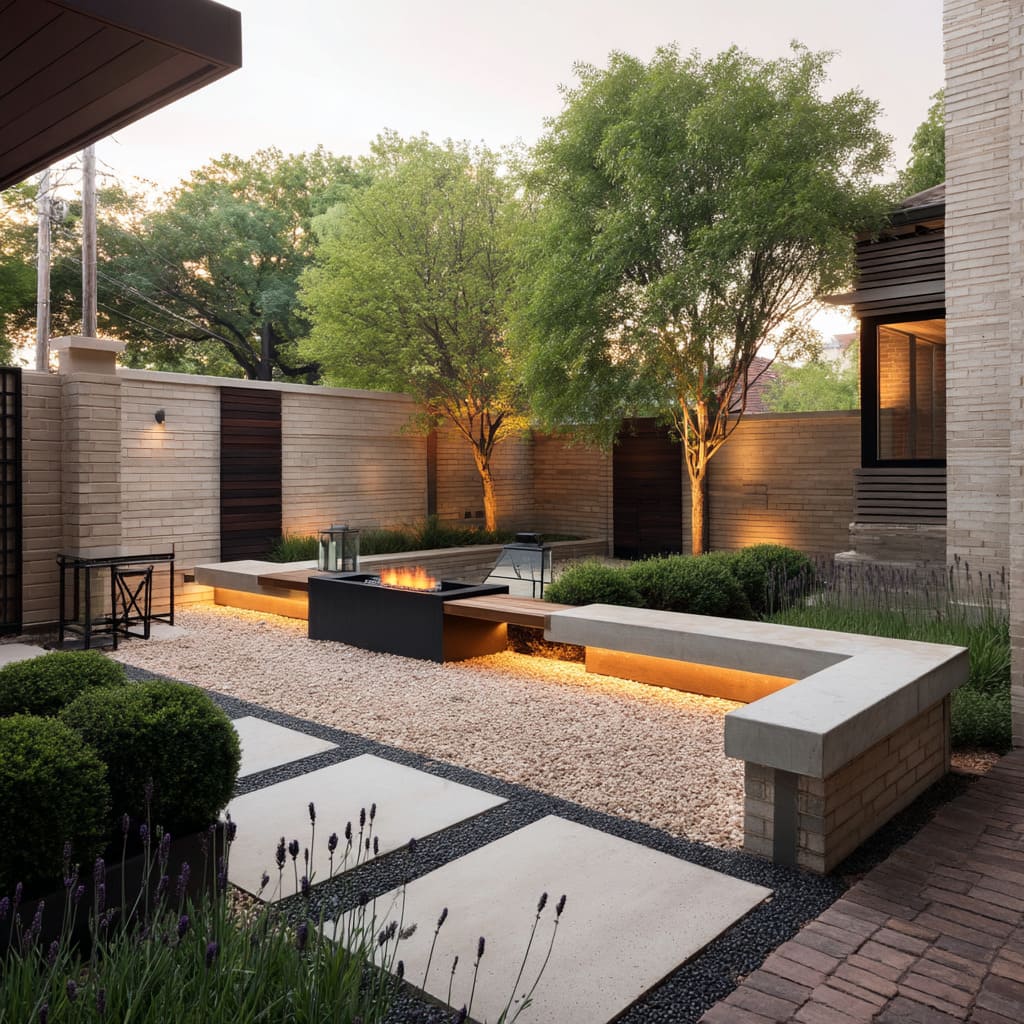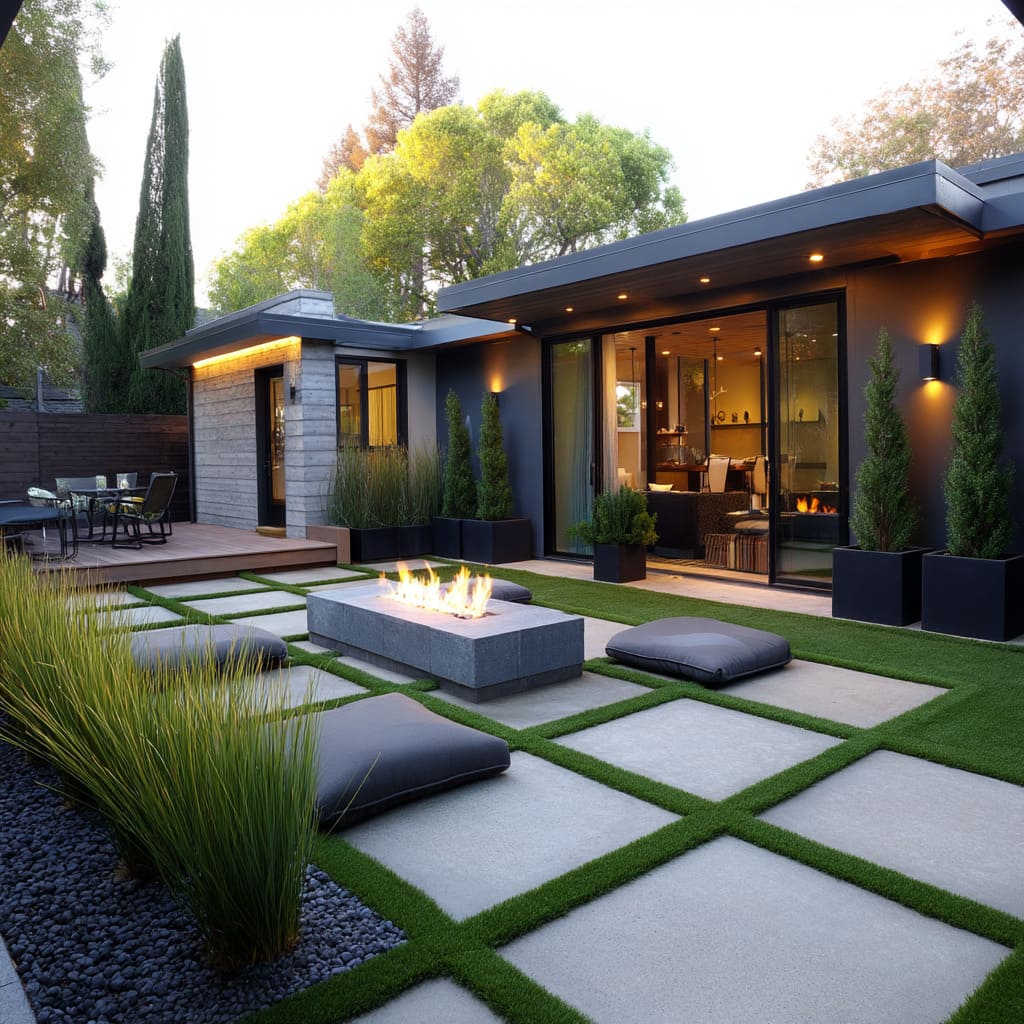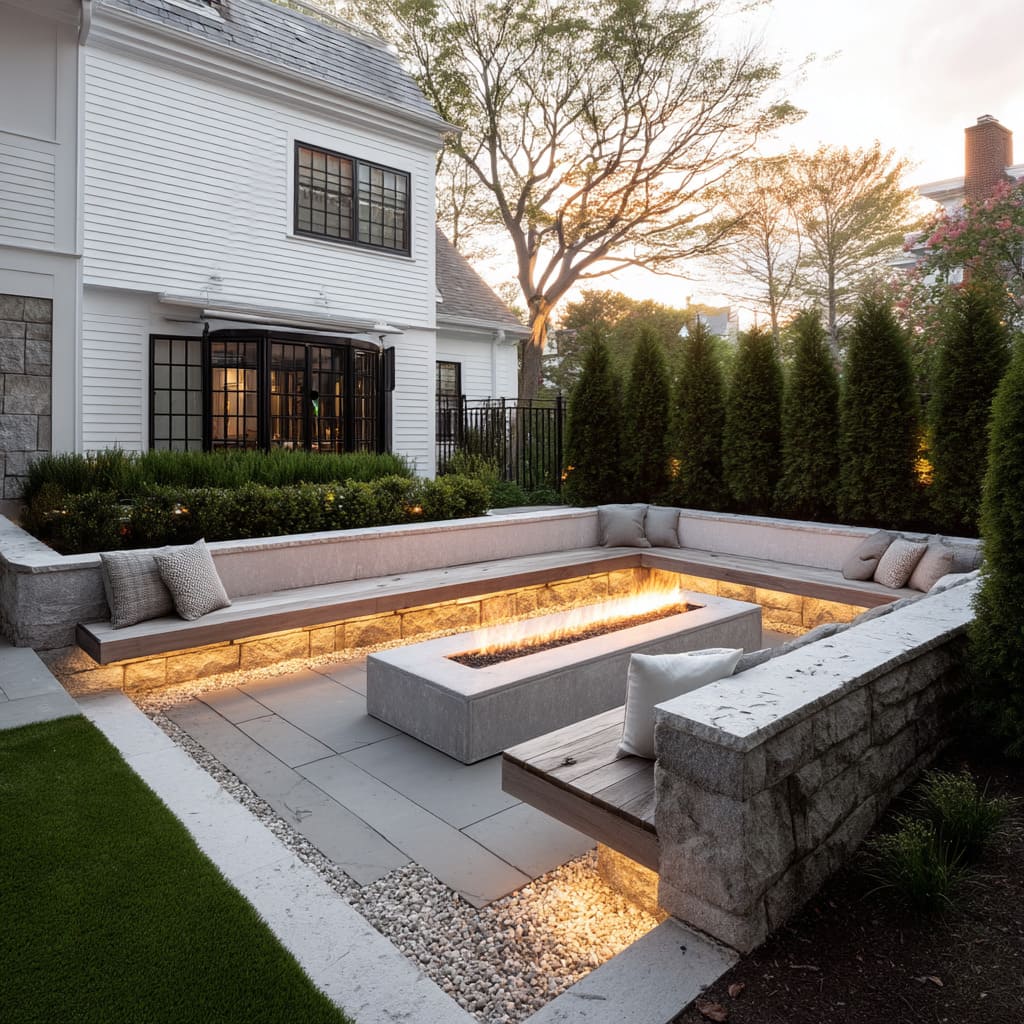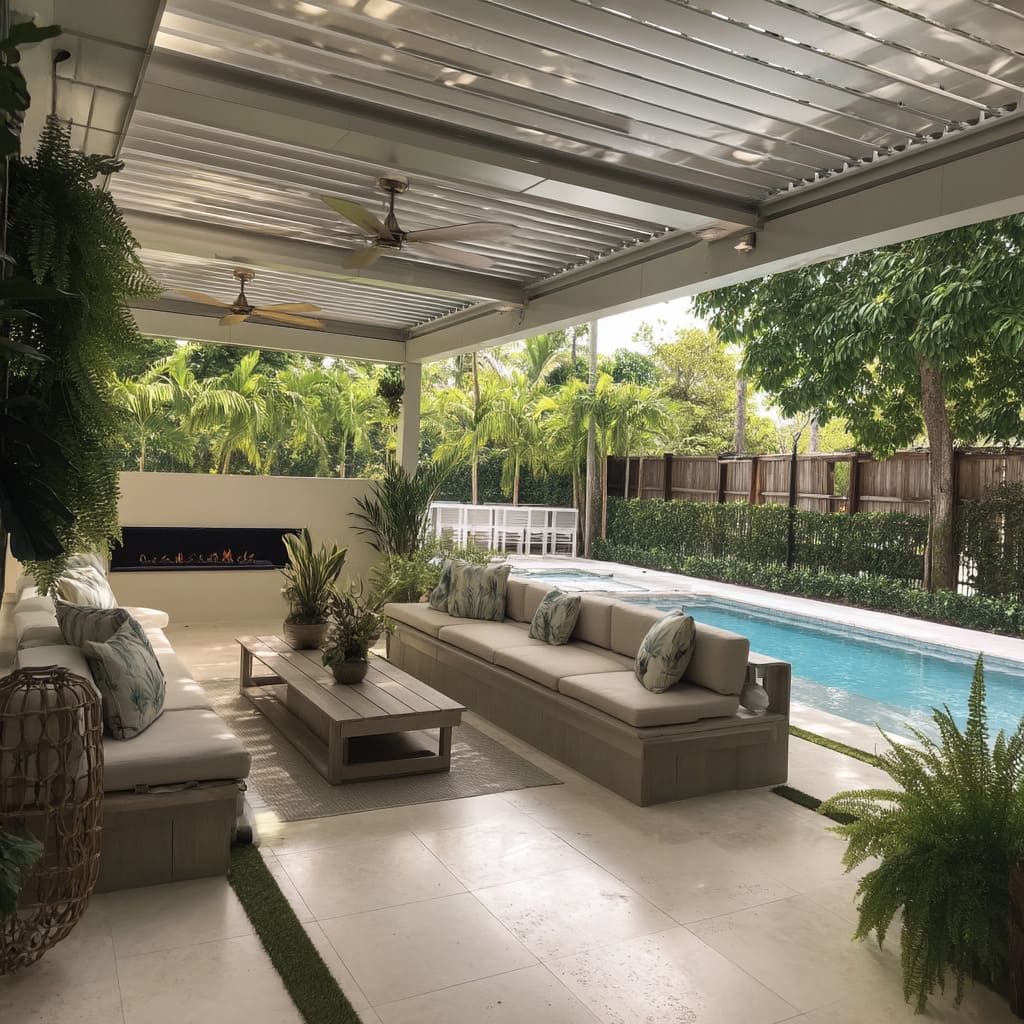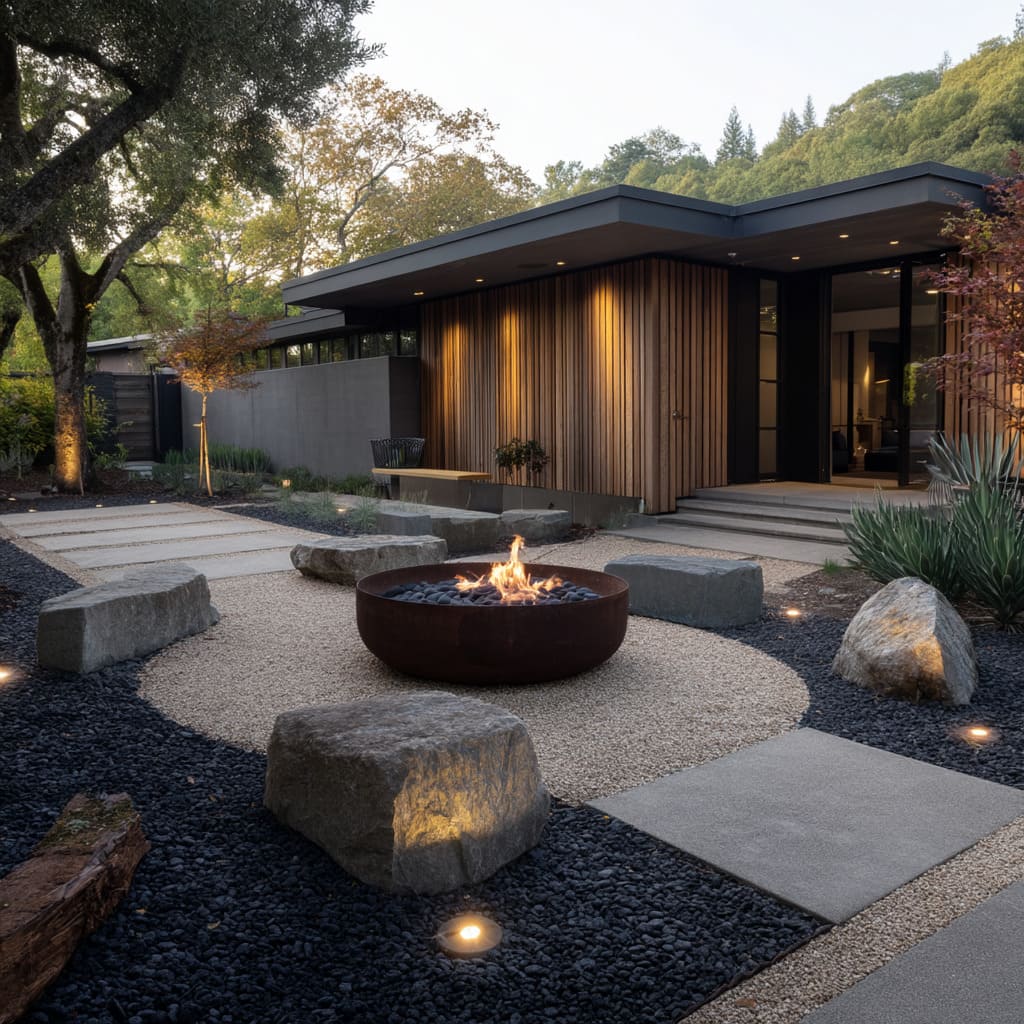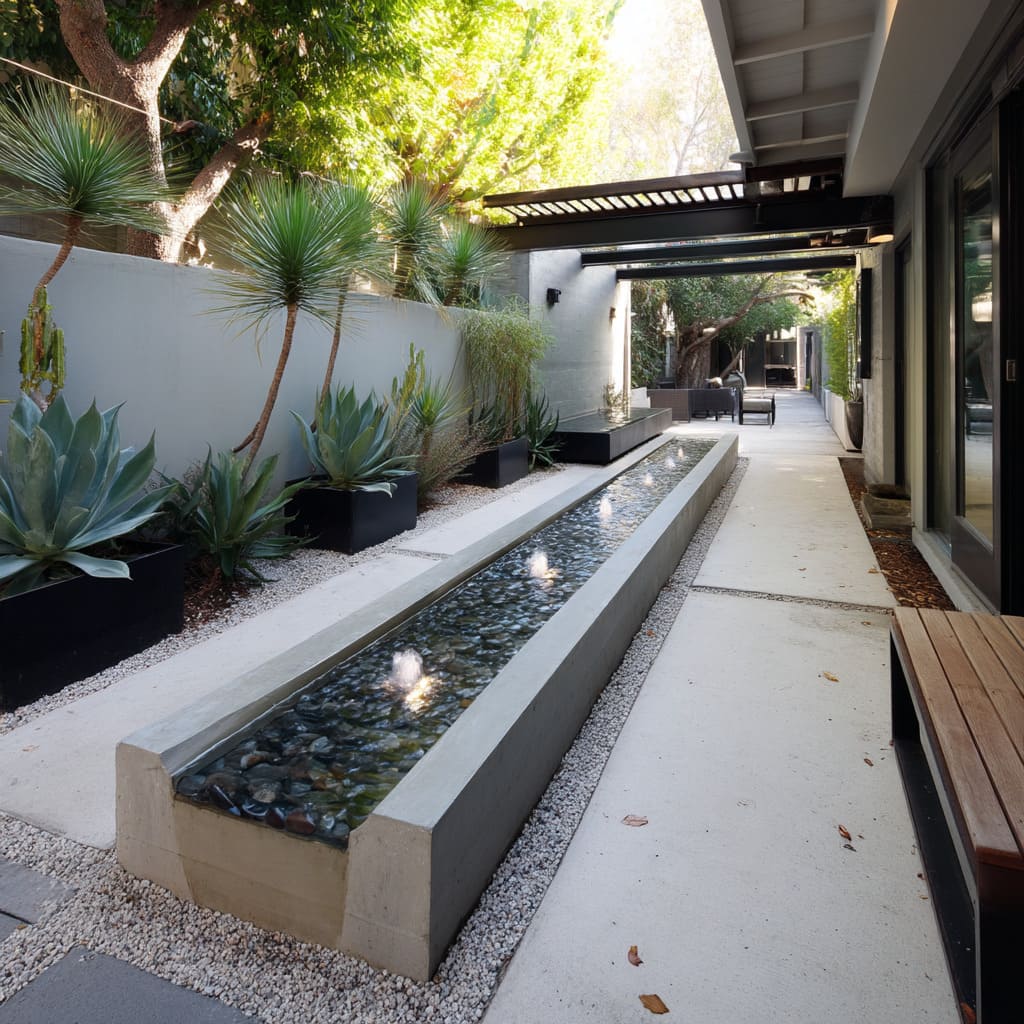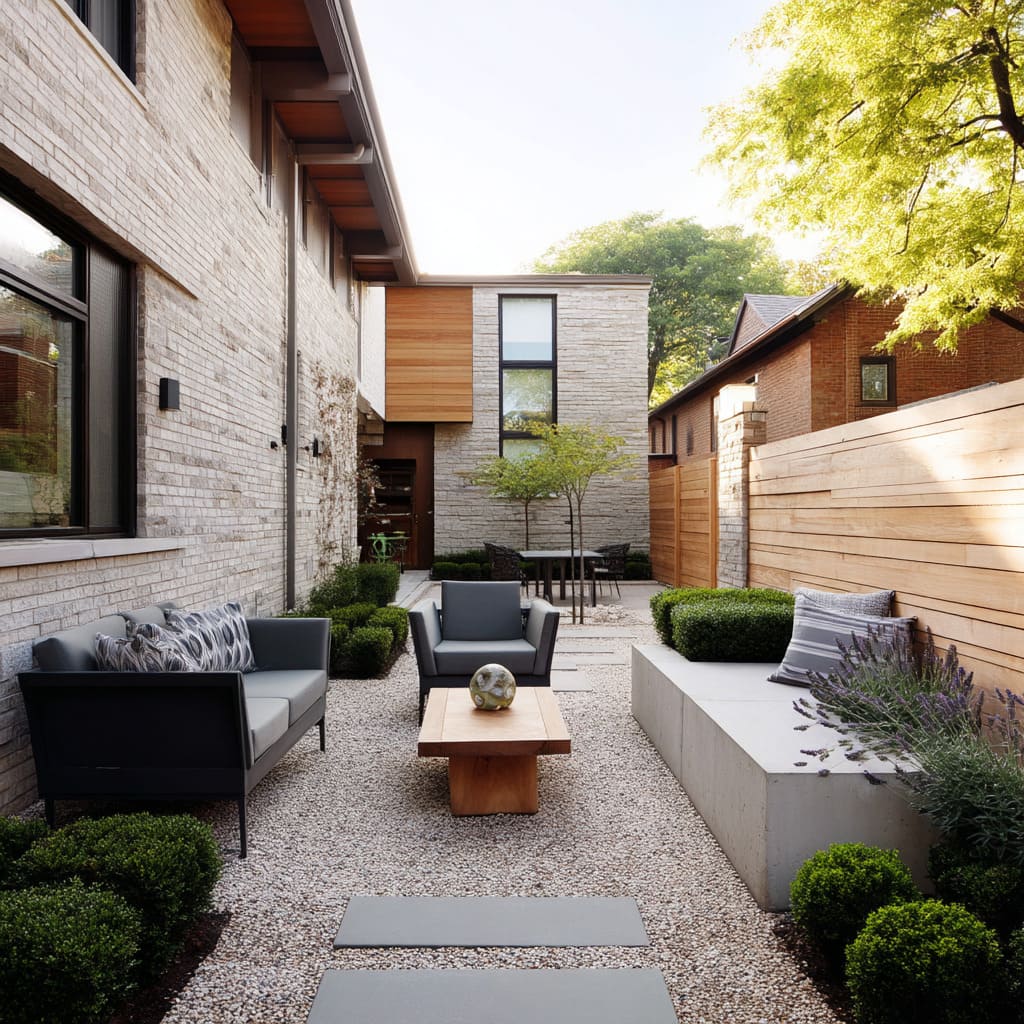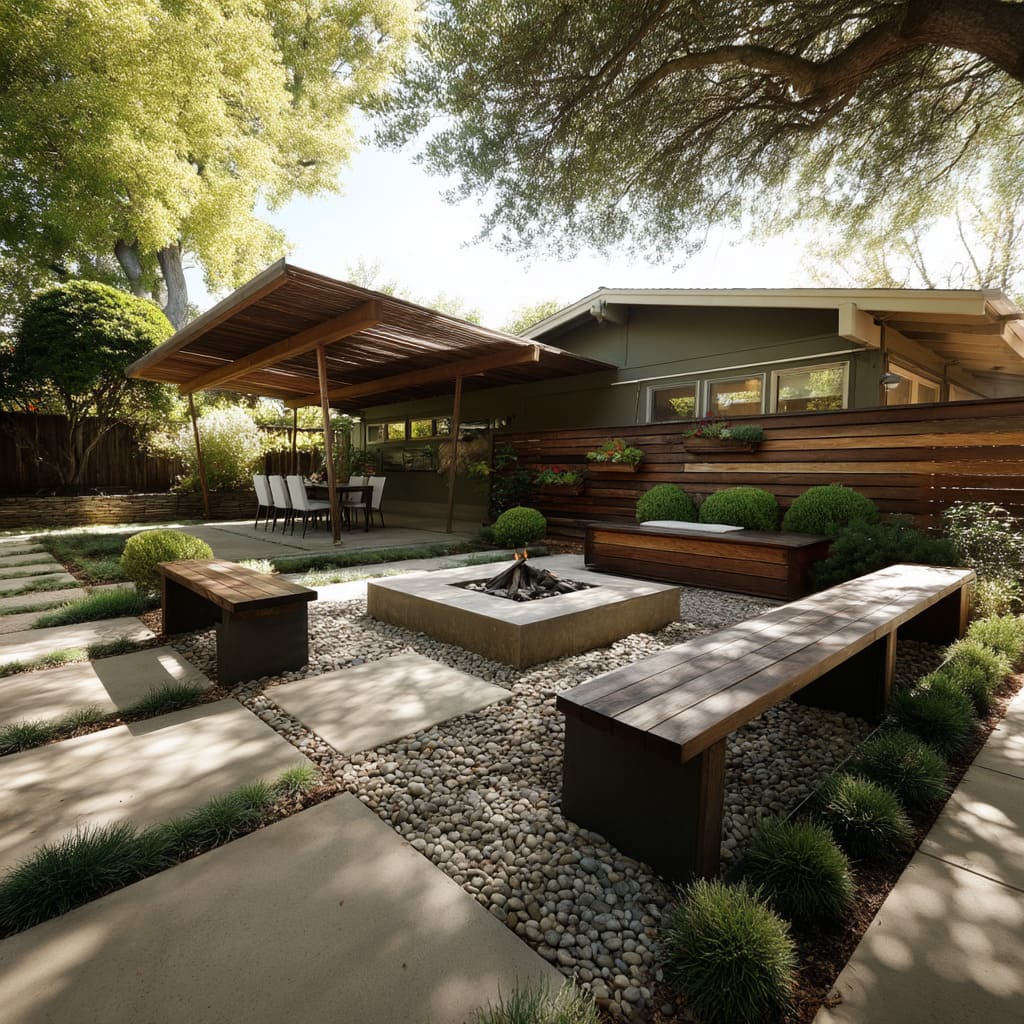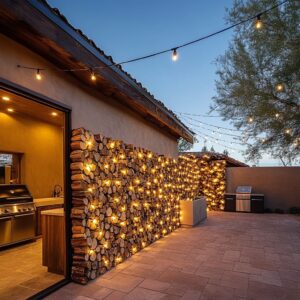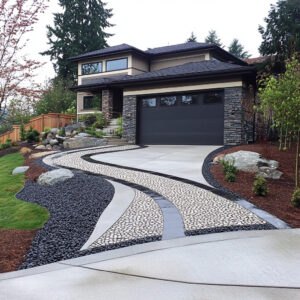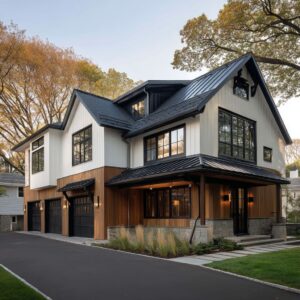Low-maintenance backyards have moved far beyond gravel patches and patio slabs. In today’s designs, ease doesn’t come from cutting corners—it’s built into every detail, from how sunlight hits a bench to how gravel lines are shaped to guide runoff.
Designers across the country are using quiet tricks that reduce yardwork without making the space feel stripped down. This article takes a close look at those details—how smart geometry can cool a patio, how certain plants handle two jobs at once, and how even the choice of concrete color can delay cleaning.
Each section unpacks specific ideas seen in real outdoor projects, especially in high-end suburban and urban backyards. The goal isn’t to imitate someone else’s setup but to understand how each feature makes upkeep easier without sacrificing comfort or style.
Whether you’re planning a full redesign or just tweaking your side yard, the ideas ahead show how modern outdoor spaces can stay sharp with less effort—by design.
Geometry as a Climate Tool
Some of the most useful low-maintenance yard ideas don’t come from new materials—they come from how those materials are shaped and placed. Certain layouts aren’t just for looks.
Take geometric patterns that bounce sunlight off pale paving: they can cool surfaces by several degrees, reducing the heat held by solid slabs. That’s a small shift with a big comfort payoff, especially where grass lawns have been replaced with paving for easier upkeep.
Then there’s the subtle edge work around water features. Narrow pools with slightly raised coping or knife-edge borders aren’t just minimalist—they break up wind patterns across the water.
That disruption helps cut back on evaporation, which is important for places under water use restrictions or where topping off the pool too often becomes a chore. In hillside spaces, like those inspired by homes in mountain regions, irregular stair placement actually serves a quiet functional role.
Uneven stone steps or offset concrete pads form micro air currents. These little swirls vent out residual heat after sunset, helping stone surfaces cool faster overnight.
It’s not something a visitor would notice right away, but over time, it shapes the whole feel of the yard—less thermal buildup, more usability after dusk.
Hardscape Pairings That Hide Wear
One of the smarter low-maintenance landscaping ideas lies in choosing combinations that wear well together, not just individually. For example, light porcelain tiles paired with large matching coping stones make a patio or pool surround feel continuous.
The lack of visible grout movement or discoloration means less time spent cleaning, and less chance anyone even notices if the ground shifts slightly over time. In fire feature zones, texture plays a quiet but important role.
Brushed concrete doesn’t trap soot the same way smoother surfaces do, and when paired with pale river rock around it, it creates a surface that hides ash naturally. Even after repeat use, there’s no need for sealing—just a light sweep once in a while keeps things presentable.
Another smart material combination is travertine set with polished black pebble joints. These joints flex with the seasons, expanding and shifting slightly without cracking.
They also eliminate the need for cut lines in the slabs, which often collect grime and break the flow of the surface visually. It’s a simple pairing, but one that keeps patios looking sharp with almost no intervention—ideal for homeowners who want lasting style without constant upkeep.
Planting Logic Beyond “Low‑Water”
Some of the smartest low maintenance backyard landscaping ideas are less about how little a plant needs, and more about where you put it. A good example: strips of lavender tucked right into gravel walkways.
The idea isn’t to fill the yard with fragrance—it’s to place scent only where someone brushes by. That way, the aroma feels subtle and natural, and at the same time, it pulls bees and other pollinators away from eating areas without relying on sprays or traps.
There’s also a practical side to vertical planting that often goes unnoticed. Tall, narrow plants like cypress or horsetail can be placed close to the edge of a house where rainwater comes down from the roof.
Instead of adding extra drainage hardware, these plants act like soft downspouts, catching splashback and letting it drip down into gravel. It keeps the base of the wall dry and helps preserve finishes like stucco or wood.
And in some patios, topiary isn’t about formality—it’s doing quiet work. When you see rounded shrubs above an outdoor grill counter, they’re not just visual accents.
They reflect and soften the heat radiating off the cooking surface, especially in peak sun hours. That makes the counter usable longer during the day without needing an umbrella or shade structure overhead.
Concealed Water‑Management Moves
Water is one of the hardest things to control in any outdoor setup, but some low maintenance yard designs hide that control in plain sight. For example, in yards with floating benches, a simple LED light strip tucked underneath can do double duty.
It’s not just for mood—it reflects differently when rainwater pools beneath. The shift in brightness tips off the homeowner that the gravel needs a quick rake, skipping the need for any sensor or warning light.
In some fire pit setups, the gravel isn’t one uniform tone for looks alone. A shift in color—from beige at the center to black on the outer edges—actually shows a subtle slope built right into the layout.
That change helps drain water away from the seating zone without needing visible trenches or grates. Another subtle move can be seen in water rills cast with no exposed joint at the base.
The trough seems to float, but that little lift actually allows the concrete to expand downward during heat cycles. It prevents cracking while also keeping the base sealed tight—so there’s no algae strip forming where standing water might otherwise hide.
It’s quiet engineering that saves on both cleaning and long-term repairs.
Fire + Water Synergy for Maintenance Reduction
Some of the most practical no maintenance landscape ideas aren’t about skipping features—they’re about making the ones you use work harder with less effort. Fire and water, often seen as opposites, can actually be managed together in ways that keep your outdoor space looking sharp without constant cleanup.
For example, deep steel fire bowls made from weathered metal form a natural seal as they oxidize. Instead of worrying about soot buildup or polish, that darkened surface simply absorbs signs of use.
It blends in, ages well, and doesn’t need scrubbing. Likewise, fireboxes set on raised brushed-concrete bases over gravel solve two problems in one: they protect nearby pavers from heat damage, and they make post-event sweeping almost effortless.
With a quick blast from a blower, ash and debris are gone—no brushes, no stains.
Pool areas are also benefiting from material upgrades. Using low-albedo tiles—those with low reflectivity—keeps surfaces from bouncing heat back at you.
That small detail allows overhead pergola slats to sit at shallower angles without losing comfort, which in turn reduces how often you need to run a fan or add a sunshade. It’s more about conserving energy than reducing labor, but the less you need to adjust or add equipment, the smoother your outdoor routine becomes.
These small shifts are what make many low-maintenance small backyard ideas with no grass actually livable—not just tidy.
Vertical Surfaces Doing Double Duty
In many of today’s outdoor layouts, walls and fences aren’t just backdrops—they’re doing hidden work that saves effort week after week. One strong example is the use of solar canopies.
The structure itself produces power during peak sun hours, but at the same time, its frame throws patterned shadows across surfaces like coping or concrete seating. That broken light hides dust and pollen buildup, meaning you can wait longer between rinses or pressure washes without the yard looking neglected.
Herb walls mounted against limestone offer another clever solution. The pale surface reflects enough warmth to keep edible plants growing fast, especially in shoulder seasons.
This isn’t just efficient gardening—it turns harvesting herbs into a trimming routine, so you don’t need to prune anything separately. Edible structure becomes everyday upkeep, with none of the extra steps.
Even greenery can work harder. In some regions, boxwood hedges are cut to alternating heights—not for aesthetics, but to scatter sound.
It’s a subtle move, acting like a diffuser to break up street noise or neighbor chatter, especially in narrow lots. And the upkeep?
Only one trim per season is usually enough to hold the shape. These tricks show how vertical space can take on more than one task at a time, and that’s the mindset behind many of the smartest low-maintenance outdoor setups today.
Furniture Fused to Architecture
One of the more overlooked low-maintenance backyard ideas is furniture that doesn’t move—because it’s built into the space itself. Take concrete benches with just a 3-degree lean in the back.
It’s enough to be comfortable, but steep enough that rain never sits long. No towels needed.
No soggy cushions to drag into storage. In some yards, trees are left standing during the build, and the deck is shaped around them with precise cutouts.
It’s a move that looks sculptural but works hard: fallen leaves drop away from where people sit, and pruning stays out of the main living zone. It’s nature blended in without the usual cleanup.
Then there’s a detail many people miss—benches that double as planters. The seating runs along the top of the planter wall, with cushions resting on stone caps.
That one move does two things: it uses less material, and it blocks any hollow gaps underneath where rodents might hide. These hybrid solutions don’t scream “function,” but they quietly reduce tasks year after year.
For a truly low-maintenance yard, these built-in touches pay off long after the initial install.
Microclimate Calibration Without Gadgets
Good outdoor design doesn’t always need fans, sensors, or smart systems to feel comfortable. Some of the best low-maintenance yard setups use shape and placement to control temperature and air movement naturally.
For example, bamboo stands lit from below create more than a soft nighttime glow. As warm air rises from sun-heated surfaces, it cools against the tall bamboo stalks.
The result? A quiet downdraft of cooler air that flows along the ground near the seating or reflecting pool.
It’s passive climate control with zero equipment.
Automated louvers—those adjustable slats above covered patios—do more than just block rain. The angle they’re set at can redirect light breezes down into the sitting area.
That soft wind movement means you can run ceiling fans at a lower speed, reducing energy use and attracting fewer insects. Slower fan speeds also mean less wear on the motor, which translates to fewer replacements over time.
These kinds of setups are smart without being tech-heavy. They’re part of what makes a low-maintenance backyard work with the climate, instead of against it.
Color Discipline That Masks Aging
One of the smartest moves in a low-maintenance backyard is picking finishes and tones that wear well without needing touch-ups. It’s not about avoiding dirt—it’s about choosing colors and surfaces that absorb age without showing it.
Take Corten steel, for example. Its warm rusted surface naturally shifts tone over time, and when set against gray gravel, the dust that settles on it doesn’t look like mess.
It reads as part of the finish. Gravel in that same muted range also hides fallen leaves, buying a few extra days between cleanups without the space looking forgotten.
In regions that favor darker hardscapes, pairing charcoal concrete with black lava rock creates a visual blend that makes fire-pit ash practically vanish. Even after use, there’s no urgency to sweep.
Everything stays visually intact, and maintenance can run on your schedule instead of the calendar. And then there’s plant selection with tone in mind.
Sage-colored palo verde trunks reflect soft green into slate-gray pool water. Early algae growth—normally an eyesore—blends into the scene for a while, giving you time to deal with it before it becomes a problem.
This kind of tone-on-tone logic is a core part of minimal landscaping ideas that last longer between upkeep cycles without looking worn out.
Closing Insight
Most of these spaces don’t broadcast how efficient they really are. At first glance, they look like carefully planned showpieces.
But the longer you look, the more you notice how each part plays more than one role. Benches aren’t just for sitting—they tell you when there’s water buildup.
Fire features aren’t surrounded by trim—they’re placed to blow clean with a single pass of a blower. Shade structures aren’t there to impress—they’re aligned to shift air and manage heat passively.
None of these low-maintenance backyard designs rely on high-effort gimmicks or overcomplicated systems. Instead, they apply a kind of quiet logic: use geometry to manage climate, materials that hide wear, and planting that does its own upkeep.
Copying this approach doesn’t mean recreating every detail. The real trick is to apply the thinking behind it—how forms anticipate use, how surfaces age, and how space organizes itself to stay tidy longer.
If that’s built into the structure from the start, then the upkeep becomes almost invisible—right down to the moment you flip on the fire feature without needing to sweep first.
Disclaimer: This article is intended for general informational purposes only. Specific design elements, structural recommendations, and installation details should always be reviewed with licensed professionals familiar with local building codes and site conditions. Before making any major changes to your yard or property, consult with an architect, landscape designer, or contractor to ensure safe and proper implementation.
